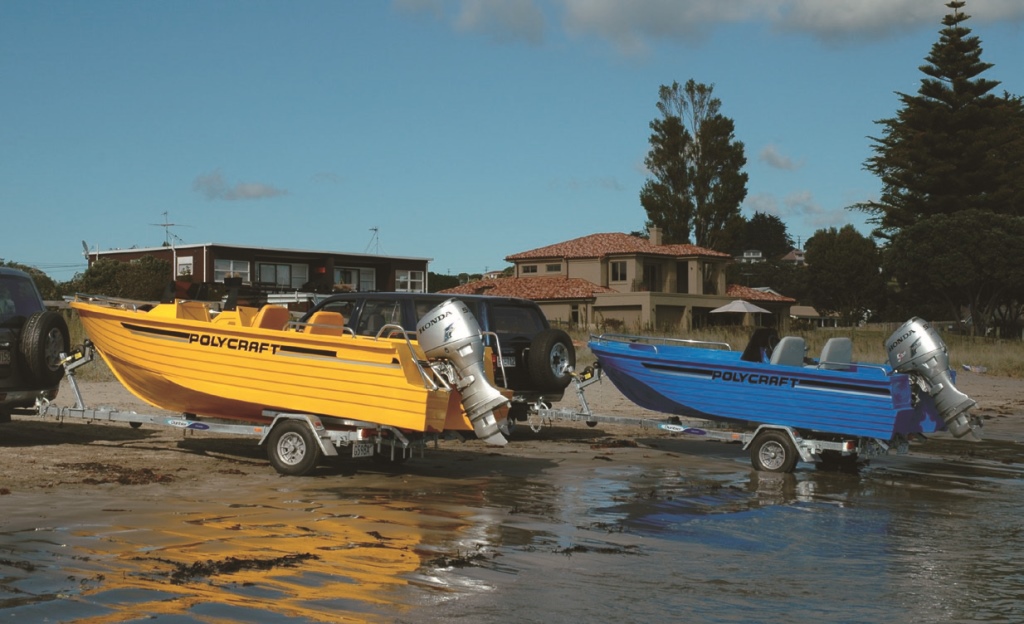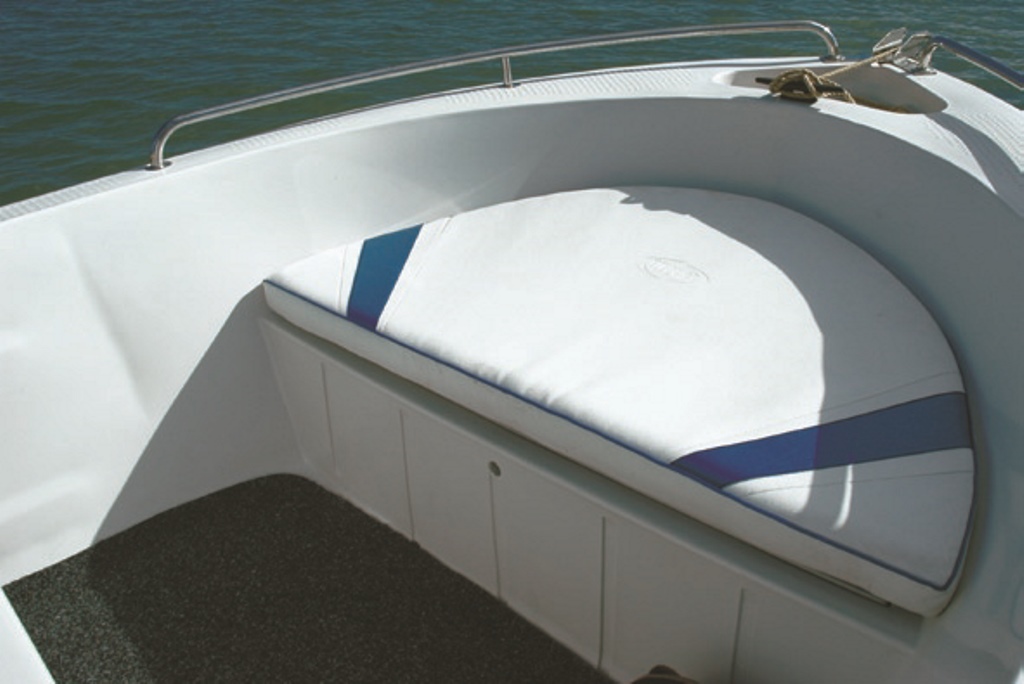Plastic Fantastic
Plastic boats were thought of as a bit of a joke in the past, very agricultural, basic boats that would not stand the test of time, and as such were really only any good for use as tenders. Technology and materials have changed, and the boats are now looking very good. The Australian built Polycraft is now available in NZ so Freddy Foote and Barry Thompson took three models for a spin.
Polycraft is being distributed in New Zealand though selected Honda Marine dealers, the first models to land here being the Polycraft 410 Side Console, Polycraft 455 Front Runner and 455 Centre Console, all rigged with 50hp Honda four-stroke outboards.
Polycraft promotes its craft, made from low-density polyethylene, as unbreakable and unsinkable, which not surprisingly, makes them virtually maintenance-free. They are easy to clean, they never need painting, they are UV stable so the colour remains the same throughout their lifetime, and of course they don’t suffer from the likes of osmosis or electrolysis.
There is one other very pertinent point too, the boat in Polycraft’s instance is rotationally moulded in one piece which includes the hull, deck, coaming, floor and interior. The production of these boats has been perfected to the point where at any given part of the hull the thickness is very close to 10mm and needless to say the end result is a hull that when combined with the foam that is subsequently injected throughout the hull, makes for one hell of a strong and extremely rigid assembly.
When people consider plastic the first thought that springs to mind is invariably longevity, and surprisingly few people would think of the concept in the same sentence as a boat. And if they did, it was always only ever as a tender. Yes, in the very early days they were certainly not taken seriously, and yes there were all sorts of problems associated with those early models, but as technology improves in every facet of our lives, so too it has with the humble plastic boat. Materials have got one hell of a lot better, stronger and more importantly UV-resistant, and the rotational moulding process has been improved ten-fold.
With this dramatic improvement in materials and techniques, manufacturers of rotationally moulded boats have been able to significantly improve their designs and increase the size of their boats. The tender became a dinghy, the dinghy was transformed into bowrider, runabout, cuddy and centre-console configurations, and then in the case of the brands available here in New Zealand, cabins and decks were added that contributed significantly to the user-friendliness of the finished product. In doing so, more importantly, it also opened up a whole new market – appealing directly to the family market.
Unbelievable Stability and Buoyancy
For test day, we decided that it was only right that we take out all three boats for a run, and as it was the last day of scallop season, it seemed a great idea to go for a dive and make the most of a bumper season.
The 410 Side Console has a very open layout with two low pedestal seats and will suit a variety of applications. Storage space for a small boat is immense, with two sizeable lockers in the aft corners, and a further larger compartment under the large foredeck area.
The 455 Front Runner is designed with two front consoles, so it is easy to walk through to the casting platform and storage. The forward platform can be utilised as seating with the addition of a large squab. More storage space is available under the consoles on either side, under the seats. Further storage is available under the corner seats aft.

Lastly, the 455 Centre Console, like the two other models, has aft storage in the corners, and storage under the large platform forward. Further storage space is available under the helm console mounted in the middle of the cockpit.
All three models also have a small anchor locker situated forward and the 455 models come with the addition of a small fairlead.
For the moment, Honda Marine will be focusing on distributing these three models as well as a smaller 3.0m dinghy, called the 300 Tuff Tender.
Models in the Polycraft range, particularly in this size bracket, are ideal for coastal boating, and probably not suited for venturing too far afield. Given their size and weight, they are ideal for launching and retrieving from the beach, as we did, and venturing down the coast to a favoured dive or fishing spot and home again.
We found all three boats to be very stable, and as Hugh our diver commented, a great boat to dive from. Also, the tough polyethylene construction means that throwing dive gear and catch bags in the boat won’t do any damage to the boat’s surface.
All three boats were fun to drive, which goes to show that you don’t have to have a big boat to still have enjoyment out on the water.
With all three boats fitted with 50hp Honda 4-strokes, they all achieved relatively the same speed, the 410 delivering 31.3mph, the 455 centre console 31.0mph and the 455 Front Runner 30.0mph. After a good run in all three boats, we noted that the centre console model struggled a little getting up onto the plane at around 3500rpm, but once up, away she went. With two people on board, we found it hard to get the boat balanced, and it would have benefited from the addition of a small bench seat for both passenger and helmsman.

Running the smaller 410 across a very short chop we noticed that it runs quite flat, and although we didn’t experience any really rough conditions, it did give the impression that it could be quite a ‘wet’ boat. With one aboard and the engine trimmed to the max we couldn’t get the bow to lift enough to stop the occasional flick of water over the gunnels.

However this could probably be fixed with the addition of a reverse wedge on the transom which would improve the outboard’s trim capability and help in lifting the bow. But then again, the size of the boat means that you’re only going to be out in it when the seas are slight anyway.
If you are looking for a completely viable alternative to either aluminium or GRP, a boat with such diverse application potential, then you should take a look at these boats – the humble ‘plastic fantastic’ has come a very long way.

Specifications
- Model: Polycraft 410SC, 455FR, 455CC
- Price as Tested: ??
- Designer: Polycraft
- Material: Polyethylene
- LOA: 4.10m-4.55m
- Beam: 1.83-1.99
- Deadrise: ??
- Hull Configuration: vee
- Trailerable Weight: ??
- Engine Capacity: 40-50HP
- Power Options: Outboard
- Fuel Capacity: tote tanks




